Film Inquiry Recommends: Female-Directed Horror Films
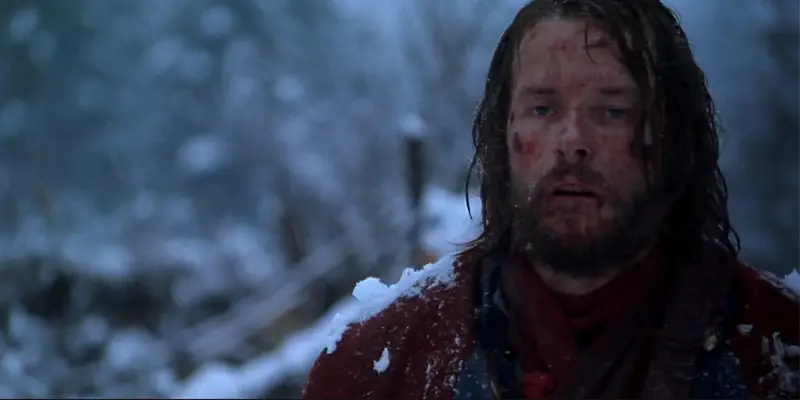
Alex is a 28 year-old West Australian who has a…
Over at our official Facebook page, we are currently posting daily film recommendations, with each week being a different theme. This is a collection of those recommendations! This week’s theme is female-directed horror films.
Lately there has been a boom in female-directed horror films, with some of the more prominent works being Jennifer Kent’s The Babadook, Karyn Kusama’s The Invitation, the work of the Soska Sisters, Leigh Janiak’s Honeymoon and much more, thanks to increased distribution avenues and the resurgence of the independent horror scene.
This list is just a look back at some of the highlights from the past 50 years, covering all the different types of horror films that the genre has to offer.
1. Slumber Party Massacre (1982, Amy Holden)
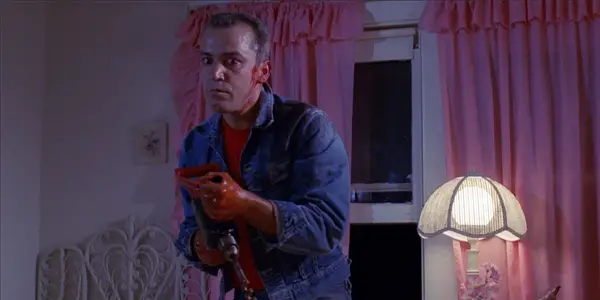
The Slumber Party Massacre is a film that is exactly what you think it will be: gratuitous nudity, violent kills, zero depth and one dimensional characters making terrible decisions, but what sets Slumber Party Massacre from other slasher clones is its slightly satirical tone, delivered by two female filmmakers, director Amy Holden and writer Rita Mae Brown.
The film was originally written as a parody of the slasher genre, one that had been flooded with many derivative rip-offs due to the huge success of Halloween and Friday the 13th. The film’s original satirical nature is evident in its blatant title, but Rita Mae Brown’s caustic tone was lost on the film’s producers, who created the film as a straight up low budget slasher, which adds to its satirical nature.
When her parents go away for the weekend, Trish Devereaux (Michelle Michaels) decides to throw a slumber party with her closest friends. Trish’s group try to invite the new girl Valerie (Robin Stille), who refuses after hearing the group insult her. As the night kicks off, the girls are visited by three guys, who join in the drug-fuelled activities.
Suddenly, the group starts to get slowly picked off one-by-one by an escaped mental patient Thorn (Michael Villella), a psychotic man who kills his victims with a large electrical drill. As Valerie lives next door to Trish (conveniently), she starts to notice something is wrong and investigates, putting her right in the cross-hairs of Thorn.
At only 73 minutes, the film is an extremely quick and efficient B-Movie which features terrible acting, unmemorable characters (Thorn is a just crazy man with a drill and nothing further) and lacklustre cinematography. What makes the film interesting is its basic nature, featuring some gory deaths and not much filler so horror fans aren’t waiting ages for anything interesting to happen. The film’s satirical elements come via its use of its female characters, who still indulge in typical 80’s characteristics such as talking about boys, frivolous nudity and rebelling against authority figures.
What sets them apart is their ability to fight back against the main antagonist, doing much more than any of the male characters, reminiscent of Adam Wingard’s You’re Next. The two ‘jock’ male characters are quite weak and dependent on the female characters, a flip on the typical depiction of males in other 80’s slashers, one of the elements that makes Slumber Party Massacre worth a watch if you can stand its brutal B-Movie elements.
2. Near Dark (1987, Kathryn Bigelow)
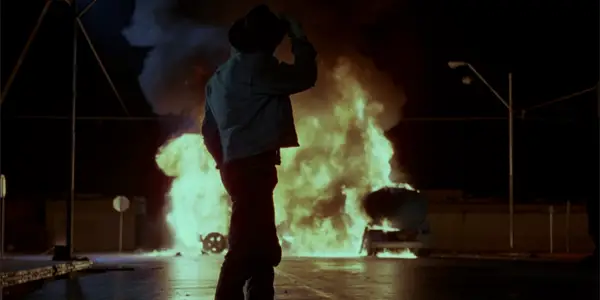
At the moment, Kathryn Bigelow is probably the best known female director, mostly due to her Oscar-winning direction of The Hurt Locker, making her the first (and only) female director to win the Best Director Oscar. Whilst she’s known now for her political films (Zero Dark Thirty, K-19 and The Hurt Locker), Bigelow’s filmography is filled with a slew of strong genre films, which include the sci-fi movie Strange Days, bank heist thriller Point Break and this Western/Horror themed vampire mash-up film, Near Dark.
Caleb Colton (Adrian Pasdar), a loner in a small town, meets the mysterious drifter Mae (Jenny Wright), who share an enchanting night together. The night comes to an abrupt end when Mae bites Caleb and runs away. The next day, Caleb realises that he’s been transformed into a vampire and tracks down Mae for some answers. She invites him to join her travelling group of drifter vampires that includes Severen (Bill Paxton) and leader Jesse Hooker (Lance Henriksen). As Caleb starts to realise the violence and bloodshed that’s associated with being a vampire, he decides that he and Mae need to break free from the violent gang and start a new life together.
Whilst the leads of the film aren’t the most engaging, it doesn’t help that they are severely overshadowed by the terrific performances by the always reliable Lance Henriksen and Bill Paxton, whose violent and psychopathic characters really give the film its off-beat energy. Bigelow successfully mixes the western and horror genres in a modern setting, helped with Tangerine Dream’s very 80’s sounding soundtrack.
The film succeeds by avoiding the usual vampire film tropes, creating a new look/style of vampire that avoids falling into any cliché territory and giving the film a sense of originality. The frequent and heavy bloodshed alongside the practical effects is also enough to satisfy any genre fan that wants to just watch an old school horror film, Near Dark is one of Bigelow’s best films and one of the better vampire films of the past 30 years.
3. Trouble Every Day (2001, Claire Denis)
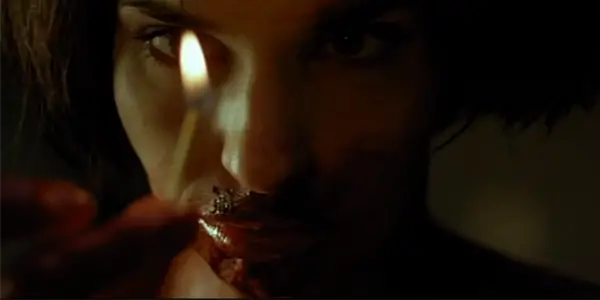
The New French Extremism movement was a term coined by film critic James Quandt to describe the wave of radical genre pictures coming from France/French directors, producing a string of critical and commercial hits, which started to heavily influence American/European horror films that came out afterwards. The pioneering films of the French Extremism Wave include Gaspar Noe’s Irreversible, Alexandre Aja’s High Tension, Julien Maury and Alexandre Bustillo’s Inside, Virginie Despentes and Coralie Trinh Thi’s Baise-moi and more.
Claire Denis’ gory entry, Trouble Every Day, was one of the only films in the movement directed by a woman, who provided one of the more complex narratives with this film. The film caused controversy during its 2001 Cannes premiere, which saw many audience members audibly boo and prompted a high amount of walkouts.
Dr. Shane Brown (Vincent Gallo) has taken his newly married wife June (Tricia Vessey) to Paris under the guise of having their honeymoon. In reality, Shane has chosen the location in order to track down neuroscientist Dr. Léo Sémeneau (Alex Descas) and his wife Coré (Béatrice Dalle), a mysterious couple that he once knew and was obsessed with. Sémeneau is currently keeping a low profile, due to his wife’s constant desire to leave their house and murder random men.
In order to prevent her from doing this, he locks her in the house during the day and if she happens to escape and kill somebody, he hides the bodies for her. When Shane finally tracks down Coré at her house during one of her brutal murders, the lives of both couples will be changed forever.
The film’s thematic subject matter is much deeper than many of the other French Extremism films released at the time, demonstrated by its existential tone, meta-narrative on gender roles within film and the movie’s unique blur between grim serial killer narrative and a supernatural vampire story. Whilst Vincent Gallo is a controversial figure himself, his basic depiction of a typical American man with a haunted past is well-balanced against the craziness of the bloody Sémeneau couple. Whilst the film’s isn’t for everyone due to its grim nature and extreme gore, horror fans will definitely get a kick out of this blood-soaked film.
4. A Girl Walks Home Alone At Night (2014, Ana Lily Amirpour)

Whilst the popular Twilight series reignited and killed the vampire genre in a quick fashion, in-between the derivative copies and pandering junk was a bunch of films which took the genre in unique and unexpected fashions. Jim Mickle’s Stake Land was a gory and highly entertaining affair which feels like the vampire answer to Zombieland, Jim Jarmusch’s Only Lover’s Left Alive mixed Western and Middle East ideologies into a hypnotising character study and Ana Lily Amirpour’s A Girl Walks Home Alone At Night is a fascinating Iranian romance that just happens to have a vampiric protagonist.
Sheila Vand stars as ‘The Girl’, an unnamed vampire who resides in the mysterious town of Bad City, a fictional city based in Iran. Using her sexuality to attract her victims, she quietly scours the streets alone, spending her days listening to an eclectic soundtrack, in her home covered in old school American paraphernalia, including the iconic images of Elvis and James Dean.
One night whilst exploring the city, The Girl meets Arash (Arash Marandi) a polite guy who is currently dealing with his drug-addicted father and his increasing mob debt. Arash’s old school personality puts him at odds with those around him, but his respectful nature and James Dean-esque looks attract The Girl, who start to form an unique bond together. When Arash’s father mob woes get worse, including the stealing of his car and high levels of violence from mob boss’, The Girl and Arash decide to do the only thing both of them should’ve done a long time ago – leave Bad City behind and start a new fresh life together.
U.S. based writer/director Ana Lily Amipour’s impressive debut feature splices several audacious genres together into one unique film which proves that there’s more to vampire films than cheap Twilight knock-offs. Described as “The first Iranian vampire Western”, using Sergio Leone’s trademark use of tension via controlled silences and eclectic soundtrack to deliver its Spaghetti Western vibe.
With a heavy Jim Jarmusch sense of coolness that gives the film its unique feeling, Amipour’s debut shows seeds of a potentially great career in directing, with her follow-up film, The Bad Batch due next year, is described as “a post-apocalyptic cannibal love story set in a Texas wasteland”, displaying Amipour’s talent for combining contrasting genres into a distinctive package.
5. Jennifer’s Body (2009, Karyn Kusama)
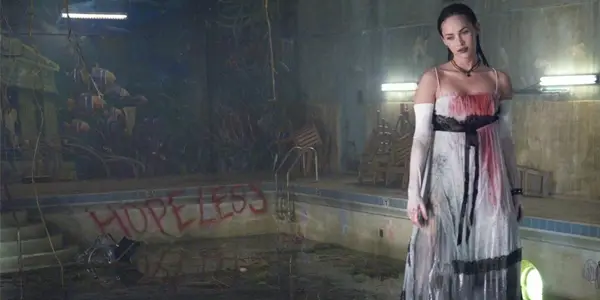
Karyn Kusama burst onto the scene in 2000 with the independent hit Girlfight, which brought both fame to Kusama and its lead actor, Michelle Rodriguez. After this, she directed the big budget adaptation of Aeon Flux starring Charlize Theron, which was taken by the studio and recut, straying far from Kusama’s original vision.
Between the commercial and critical disappointment of that film and Jennifer’s Body in 2009, many people had dismissed Kusama unfairly. Recently, she has come back in a big way with her disturbing thriller The Invitation, which once again highlights her talents in genre filmmaking, a much more subtle and chilling affair than the black comedy Jennifer’s Body.
Megan Fox stars as the titular Jennifer, a popular cheerleader in the dead-end town of Devil’s Kettle, who is best friends with the supremely nerdy Anita, aka ‘Needy’ (Amanda Seyfried), an uncommon friendship that many of their peers constantly question. One night when Needy and Jennifer go to the local bar to check out the rock band Low Shoulder, an accidental fire burns down the entire bar, leaving only Jennifer, Needy and the band alive.
Seemingly unaffected, the band take a shocked Jennifer with them, leaving Needy alone and confused. When Jennifer shows up the next day at school completely unharmed and without any sorrow for what has happened, Needy starts to seriously question what is going on, especially when many of the men around the school start to be killed in incredibly brutal fashions.
Jennifer’s Body is one film which has several unjust strikes against it upon release. The success of the first Transformers film in 2007 had propelled Megan Fox into stardom, making her one of the more prominent actors in mainstream media very quickly, making her appearance in an R-rated horror film quite controversial, added with the increasing audience fatigue of constantly seeing her image in the tabloids.
The other big part was the script was written by Diablo Cody, her first film off her huge debut success with Juno, which she won an Oscar for. Cody’s unique writing ability, plus her distinctive personality made her work very polarising, with some people loving her purposefully crafted dialogue and post-modernist riffing, with other people put off by her non-traditional screenwriting techniques.
With these factors, plus Kusama coming off the disappointing Aeon Flux film, many audience members quickly dismissed the film without outright seeing it. You can also chalk it up as a misogynistic backlash, but that’s a political debate for another day. What they missed was a highly underrated gory callback to the horror films of the 80’s, mixing Mean Girls-esque high school drama with the extreme splatter of a Video Nasties film.
6. Ravenous (1999, Antonia Bird)
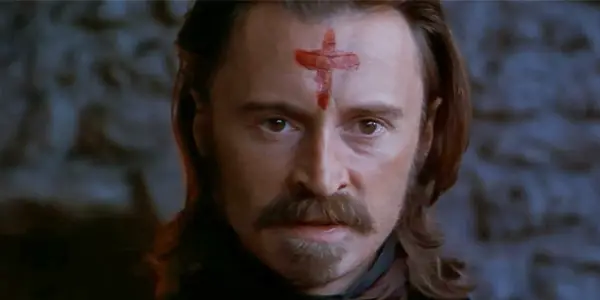
Set during the Mexican-American War in 1847, Ravenous is a film which deceives you with its period setting and sardonic black humour, generated by its offbeat characters and unique soundtrack. As all good horror films do, the tension slowly ratchets up, as the gore and bloodshed builds, without a single jump scare in sight. The horror displayed in Ravenous is much more psychological, delving into more graphic displays of brutality at select times in order to maximise their effectiveness.
The film’s treatment of cannibalism is quite different than most expect from the horror genre, where films such as Cannibal Holocaust and Cannibal Ferox have traditionalised the image of cannibal in film as the blood-thirsty native, a stereotype which this film flips on its head. Ravenous is a wholly original tale, going in unpredictable ways, straying from the expected narratives routes than one might expect from a film like this.
Guy Pearce plays Boyd, a captain during the Mexican-American War whose entire platoon is slaughtered, leaving only Boyd alive. Playing dead, he is captured by the enemy and taken to their base, where he uses the element of surprise to take over the base and win the battle. Whilst he is celebrated as a hero for a short amount of time, his cowardliness is soon revealed, thus he is promptly shifted to a secluded to Fort Spencer, a remote military outpost high in the Sierra Nevadas.
The fort is filled with a cavalcade of misfits, each with their own delightful quirk, led by the sensible Colonel Hart (Jeffrey Jones). Shortly after his arrival, the group find the abandoned Colonel Ives (Robert Carlyle), a man whose entire group has been killed. Things start to take a turn when it is slowly revealed that Ives is a sadistic cannibal, bent on slowly taking the Fort for himself.
The film is a great entry point for non-horror fans, as it takes horror tropes and uses them extremely well and in non-predictable fashions, but isn’t so scary as to turn them off the genre. It’s a miracle that the film came out at all, as the film had some awful production troubles. The original director, Milcho Manchevski, was three weeks into shooting the film when he left, due to poor production and constant notes from the studio. Antonia Bird was brought on-board from a suggestion by Carlyle, who had previously worked with her. Bird has gone onto to say that she doesn’t blame Manchevski, stating that the production was awful and the producers put a heavy strain upon her during filming.
7. Blood Bath (1966, Jack Hill & Stephanie Rothman)
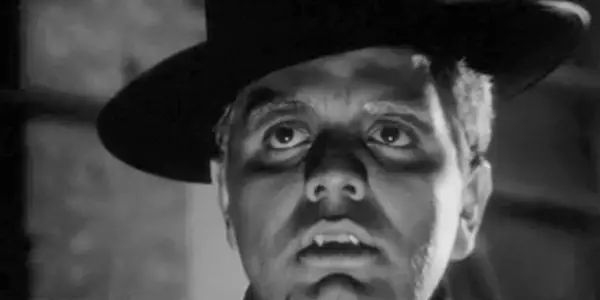
One of the techniques that has kept Roger Corman in business for so long is his ability to use all of his resources to their full extent, stretching and maximising small budgets whenever he could. In 1963, while on vacation in Europe, Corman made a deal to distribute an unproduced Yugoslavian espionage thriller to be titled Operation: Titian for $20,000 and insisted on control over the production to make it fit for American audiences. Upon finishing it, Corman realized the film was unreleasable, thus it sat on a shelf for a year. Corman enlisted director Jack Hill to fix the film, adding reshoots to turn the film into a horror film, retitling it Blood Bath, twisting the spy film into a gory affair featuring Jack Hill favourite Sid Haig.
Once again, Corman was unhappy with the result, thus it sat on the shelf again until 1966. Stephanie Rothman, former assistant to Corman, was then picked to fix the film again, turning it from a slasher film into an obscure vampire affair. Her version was deemed acceptable by Corman who finally released the film, although it was one of his less successful films compared to others. Due to the use of most of Hill’s footage, he received co-directing rights with Rothman, despite the two never working together.
The finished product, still titled Blood Bath, is quite a predictable horror film which is evidently pieced together by three different director’s works. Despite this, Rothman has managed to make a watchable B-Movie out of a film with such a mangled troubled history. The story, albeit quite thin, entails the adventures of Antonio Sordi (William Campbell), an insane artist who captures young women and kills them, disposing their bodies in a large vat of wax.
In order to connect the different films together, Rothman re-wrote that Sordi is actually a vampire who changes form when murdering their victims, a plot change done because William Campbell refused to shoot any new scenes and Rothman had to fix the film somehow. Blood Bath is an example of a film where the production history is much more interesting than the film itself, much like John Frankenheimer’s Island of Dr. Moreau.
Can you think of any other female-directed horror films that you’d recommend?
Does content like this matter to you?
Become a Member and support film journalism. Unlock access to all of Film Inquiry`s great articles. Join a community of like-minded readers who are passionate about cinema - get access to our private members Network, give back to independent filmmakers, and more.













